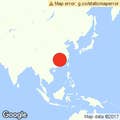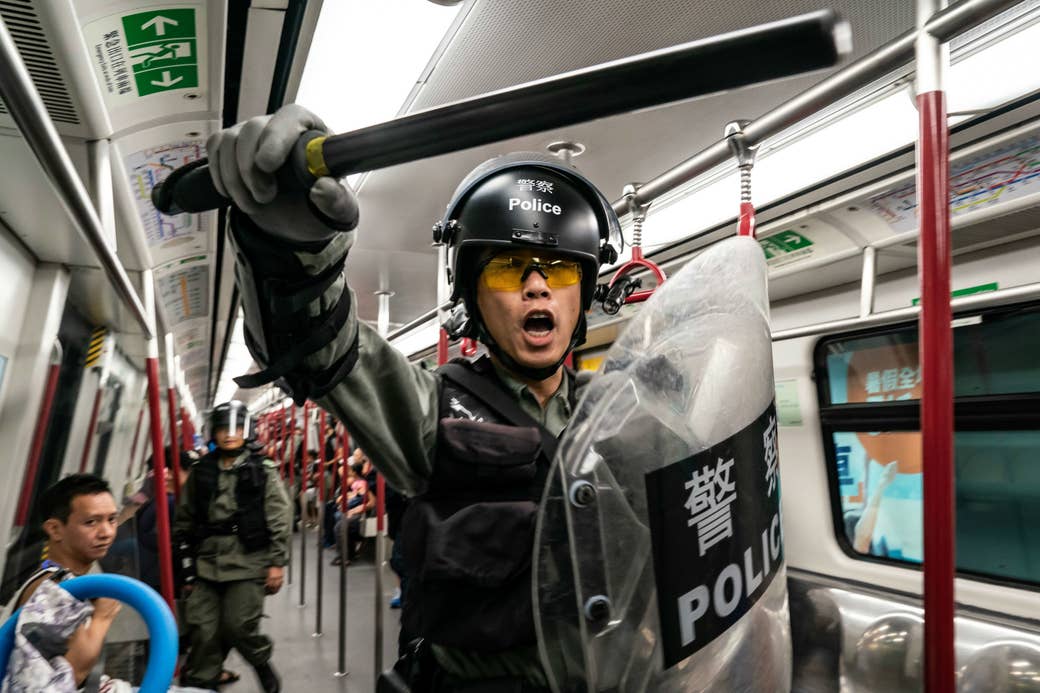
HONG KONG — After a week of complete shutdowns and early closures, and following months of mounting concerns, Hong Kong’s once-prized train system has become another tool of government suppression, say pro-democracy protesters.
The Mass Transit Railway (MTR) is the lifeblood of Hong Kong, a state-of-the-art public transit system that zips passengers from one end of the city to the other in minutes. But it has also allowed demonstrators to move rapidly from one protest site to the next, in line with their “be water” strategy.
Current MTR employees told BuzzFeed News they too had concerns in how operations had shifted to support the government since August, expressing dismay over the frequency of stations closing, and allowing more riot police into the stations as the protests have worn on.
Last week, Hong Kong used colonial-era rules to force through an unprecedented ban on people wearing face coverings in public that have become typical garb for protesters. Residents worried about what oppressive measures the government would take next, including the imposition of a curfew or curbing internet access.
Tens of thousands took to the streets over the weekend with more hardline protesters torching pro-Beijing businesses and banks along with MTR stations — setting entrances ablaze and smashing windows and ticket machines. The entire train system shut down as a result, a first in its 40-year history.
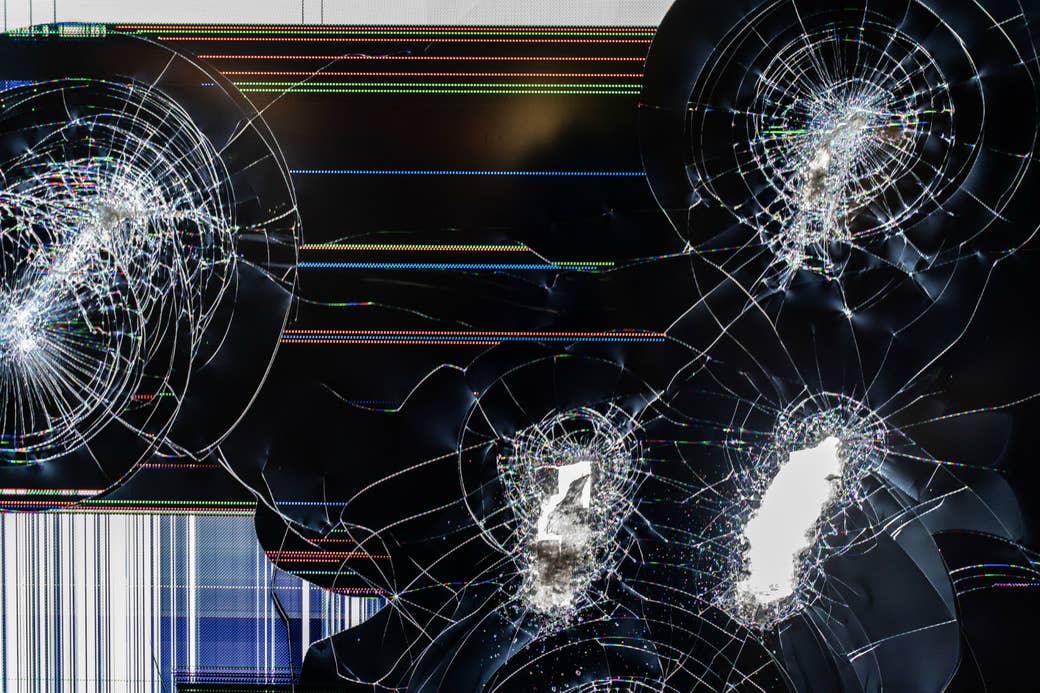
The commute home was a little more hurried than usual on Thursday night as travelers rushed to catch the last trains. It was only 9 p.m. but minutes later, the MTR station was already empty with only a few station attendants left keeping watch.
“I think this is just a way for the government to make people not go out,” said Jeff Chen, 33, who was on his way to catch another bus after making the last train. His journey home from work wasn’t over yet when service had stopped. “I’m really opposed to it.”
MTR Corporation said earlier this week that there was extensive damage and while it was working hard to make repairs, it would close early the following day “to allow more time for continuing repair works and inspection.” Early closures have continued all week. Protesters’ skepticism that the MTR genuinely needs to repair recent damages only shows how extensively residents’ trust in the train system has evaporated in the last several months.
All MTR services have been suspended this morning until further notice. For a city that relies on mass transit, this is a de facto curfew.
Some entrances are still visibly charred or smashed, and at many stations, there are coverings over ticket machines and turnstiles with signs signaling they have been damaged. Still, multiple MTR workers said they believed there were no technical reasons for the early closures.
“The trains could run normally,” said a technician, who explained the signal system of the trains has not been damaged. “I can’t see any reason to shutdown but a curfew.” All current employees asked for anonymity, fearing reprisal.
An engineer told BuzzFeed News that staff believe the official explanation for the station closures “makes no sense,” citing a derailment in September that did not affect train operations significantly.

Steve Tsang, the director of the China Institute at SOAS University of London, acknowledged its use as a political tool but cautioned against considering the early closures a curfew though, as some protesters have started labeling it, since people are still free to move about the city.
“It almost certainly is intended to make it much more difficult and inconvenient for protesters. It’s also making it inconvenient for everyone else and therefore turning public opinion against demonstrators,” he said.
“If the government was trying to impose a curfew it would have done so,” he added, since it had the power to do so under the emergency law. Earlier this week, Hong Kong’s Chief Executive Carrie Lam said she doesn’t have current plans to pass any more legislation under that law.
The MTR did not respond to a request for comment but in a number of recent press statements has only said that the closures are to respond to extensive damage to the system.
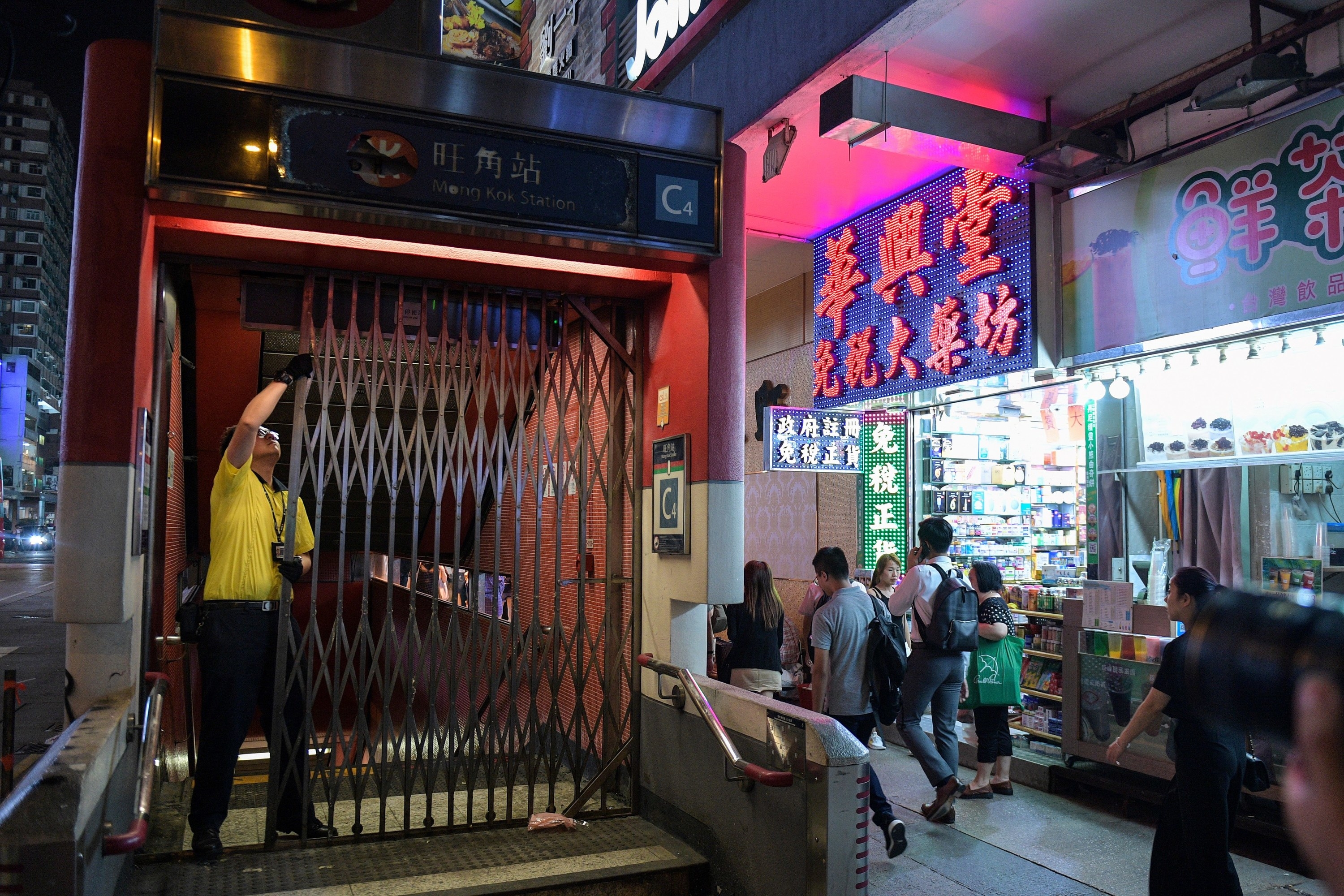
The Hong Kong government, which protesters barely trust to be little more than an extension of Beijing, is a majority owner in the publicly traded train operator, as well as its regulator. A 1999 operating agreement between the corporation and the Hong Kong government guides the relationship today. While some legislators at the time expressed concern this would cause a conflict of interest, it was dismissed.
“We do not believe that the conflict of interest, as envisaged by [lawmakers], will even arise,” said the operating agreement.
MTR Corporation also runs train systems in the UK, Sweden, and Australia, though much of its revenues come from retail properties. Two decades later after the operating agreement was signed, the principal conflict of interest may not be a financial one, but rather how to grapple with both serving the transportation needs of Hong Kong residents as well as an owner that is struggling to find ways to clamp down on more than four months of protests.
The company went public in 2000, citing a risk in its IPO that, “the Government can exert significant influence on the Company and could cause it to make decisions, modify the scope of its activities or impose new obligations on it that may not be in the best interest of the Company or its other shareholders.”
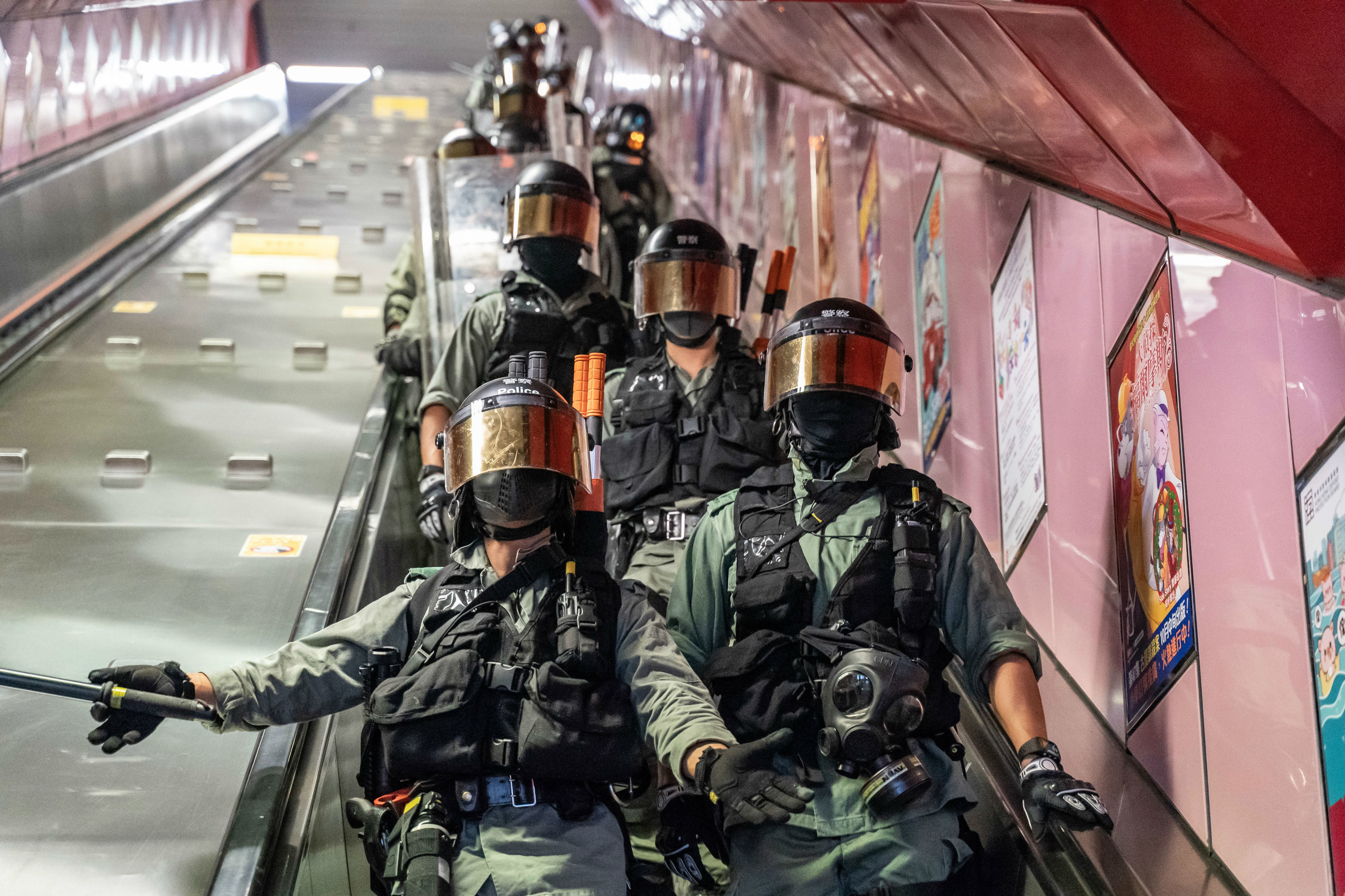
When the demonstrations began in June, initially over a bill that would have allowed criminal suspects to be extradited to the mainland, long lines of protesters snaked through the MTR stations to buy single-ride tickets instead of swiping their Octopus cards, which store location data. On the days of marches, stations swelled with protesters dressed in black heading to Victoria Park, a frequent starting point. But wary of the government tracking their movements, some even stuck single-ride tickets to the top-up machines, leaving them for anyone who needed to get home.
In late July, MTR passengers in Yuen Long, in the north of the city near the border of mainland China, were attacked by a mob of men on the night of a protest. Dramatic, widely circulated footage showed men in white T-shirts beating terrified passengers with rods. The MTR said in a statement that it contacted police but was “concerned about the response time in this serious incident.”
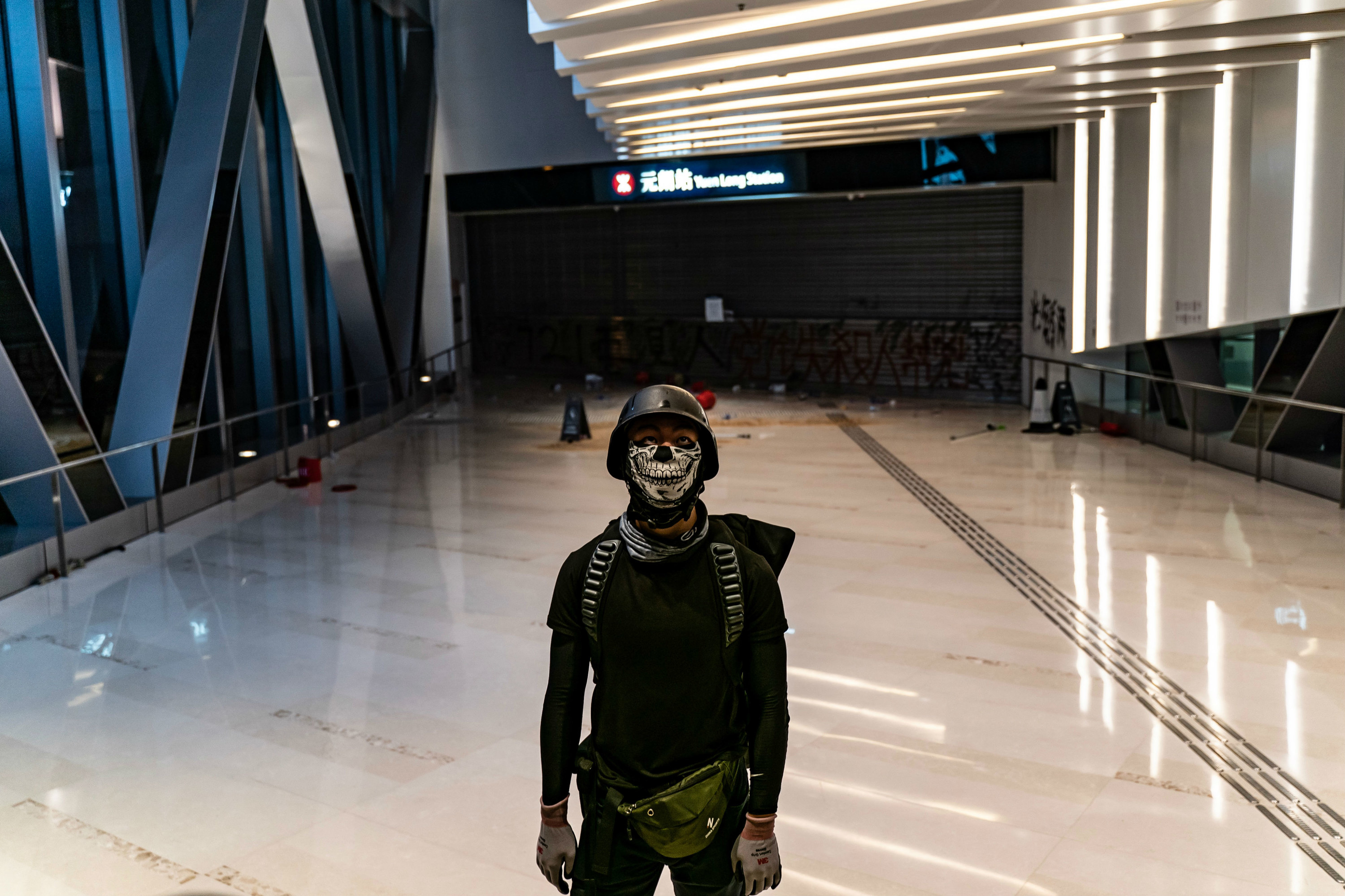
That night sparked fury among residents and protesters as police were accused of doing little to stop the attacks that were attributed to gang members associated with pro-Beijing views. No immediate arrests were made that night as dozens ended up in the hospital with injuries. Footage of the incident of the attack is among the most visceral displays of violence associated with the protests, and an acute point of outrage among protesters.
Tensions between protesters and the MTR flared again in early August when riot police fired tear gas directly into the Kwai Fong station after a Saturday march. In a separate incident the next day, police fired pepperball rounds at passengers leaving Tai Koo station. Crowd control tools like tear gas and pepperball rounds are not designed to be fired in closed spaces.
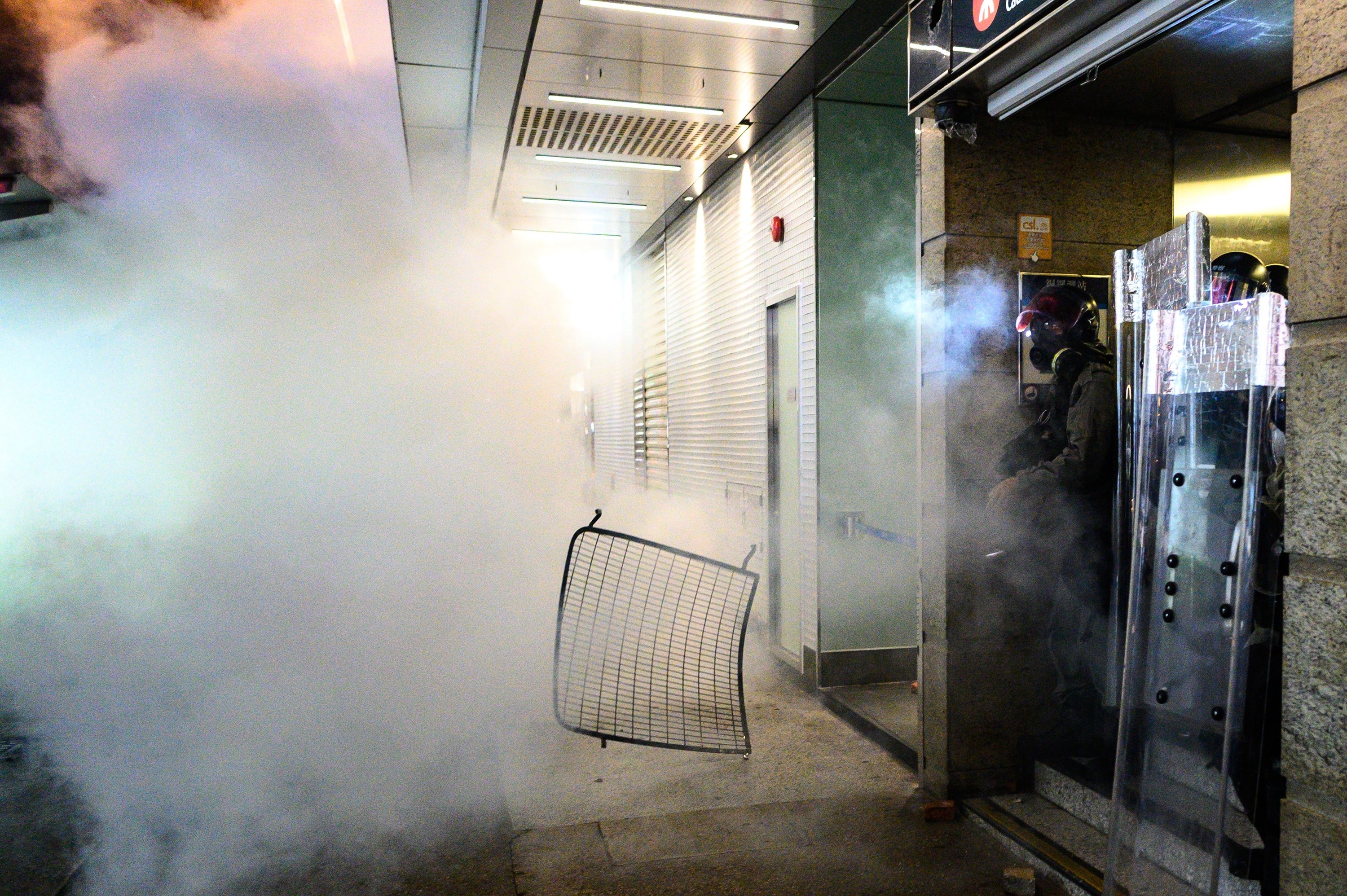
“We tried really hard to keep service running and keep police out of stations” in June and July, an MTR station officer told BuzzFeed News. But starting from those incidents, “it became quite clear that police didn’t bother to respect our station boundaries,” the station manager added.
The MTR issued a statement that it had been “carrying out extensive cleaning” at the two stations to respond to the public’s safety concerns, but did not address the heavy police presence. In another press release, it said that it held on-site meetings at the two stations to address residents’ concerns and posted information in the stations as well.
Days later, multiple Chinese state media outlets attacked MTR Corporation and accused it of operating secret trains to assist the protesters. The MTR “cannot kowtow to radical forces or offer protesters special services far beyond what the public expects,” said one Global Times opinion piece.
Some employees told BuzzFeed News that this marked a clear shift among managers in how to respond to the protests, taking a harder line view to shut things down more quickly. “Things turned quite obviously,” said a station manager. “The senior management decided to support police actions instead of keeping the service running.”
After the Kwai Fong and Tai Koo incidents, the MTR also became a new target for protesters and they started vandalizing stations on the days that confrontations erupted with authorities — starting fires and tossing bricks. Protesters called the MTR the Chinese Communist Party’s Railway and increasingly linked it with the same ire they felt toward the government. By then, the demonstrations had widened from anger over the extradition bill to a movement against China’s encroachment on the rights of the semi-autonomous territory. Protesters were repeating their list of five demands that included investigating the police and demanding universal suffrage in its elections.
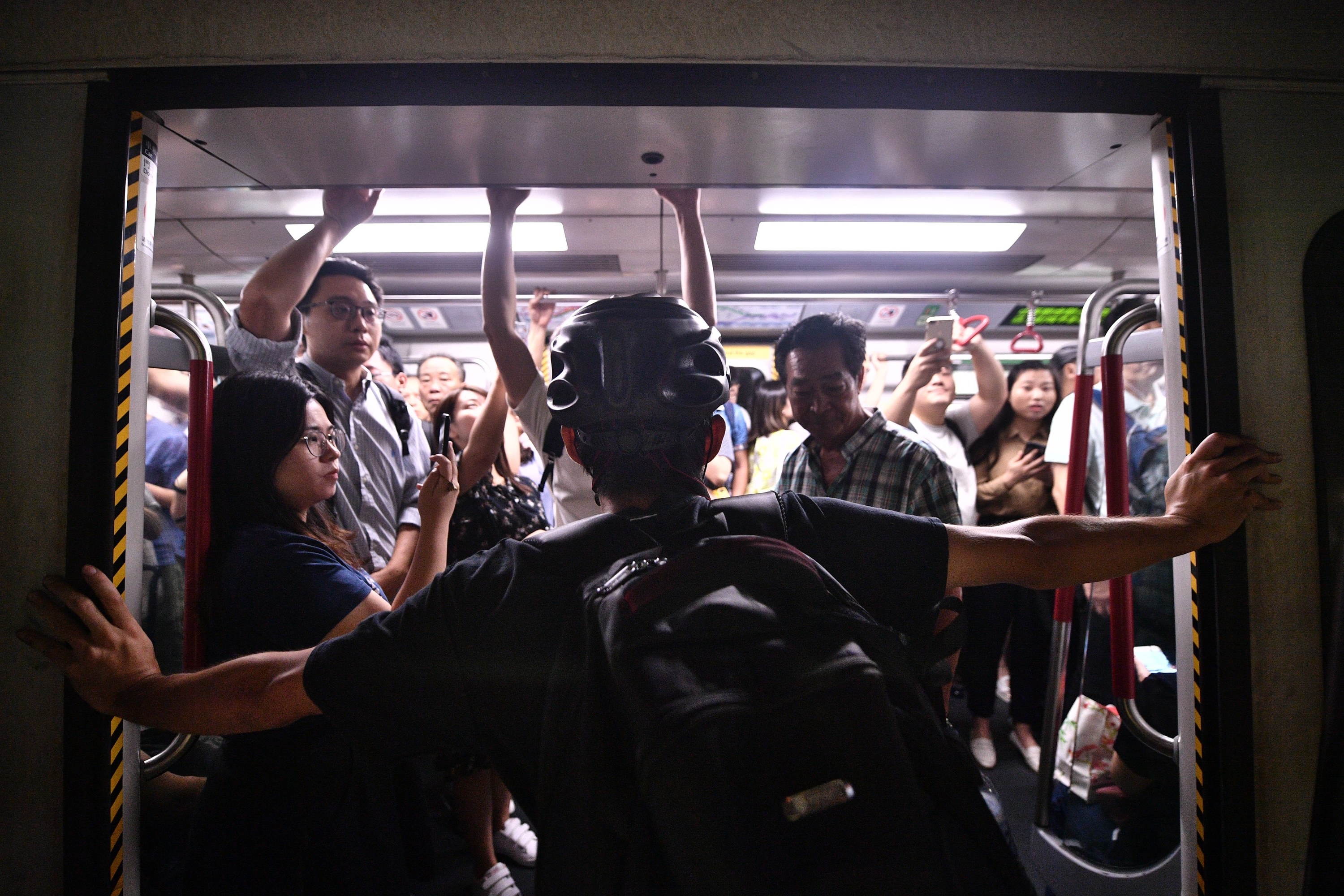
The company denied that it did not address the incidents appropriately and said that because of vandalism it would need to start closing stations with little warning. “The Police may need to enter stations to take suitable law enforcement action when necessary,” it also said.
Near the end of August, the train operator obtained a court injunction to stop protesters from interfering in operations. But days later in one of the darkest incidents of the summer, police stormed the Prince Edward MTR station on Aug. 31. The MTR said they called police after passenger disputes on a platform and started clearing the station. Footage from the incident shows police beating and pepper-spraying passengers who were crammed, immobile on an escalator, amid screams. More than 60 were arrested that night.
A lawmaker later released fire department logs from the night that allegedly revealed the number of people injured in Prince Edward station had been changed from 10 to 7. Some protesters believe that the three missing in the logs were severely injured, or even killed. The MTR denied any foul play and released still images from the night of the protest. But its decision to withhold the full CCTV footage in some ways has only fueled this allegation.
The MTR’s 1999 operating agreement directly notes that the MTR will accommodate the Hong Kong Police Force to the satisfaction of the police commissioner. It’s also required to report any delays had closures to the transport commissioner.
But this has seemingly gone even further — with police sometimes shuttering stations door during violent escalations with protesters, using it as a type of makeshift shelter. In another recent protest, police detained people inside the Admiralty MTR station — just outside of the government complexes. At another station exit, protesters pried open the bottom of the metal shutters for a few inches and pulled dozens of protesters out, helping them escape.
In a flyer circulated on social media, protesters have called for MTR to stop letting police use the MTR stations as satellite police stations and releasing the Aug. 31 footage as points that would help the public regain trust again.
Guidelines for Empty R. We used to obey the rules, not anymore because MTR is now CCP railway. #MTR
The decline in trust of the train operator has spread to its own workers. In interviews with seven MTR staff, employees said they largely stayed quiet at work about protests, restricting their discussion to chat groups or just friends.
There has been no restriction on supporting the protests, said workers, but all believed most managers are pro-government and recalled the abrupt firings of workers at Cathay Pacific who supported the protests. Staff at the airline have been warned in an internal memo not to participate in protests.
“Most of the colleagues and high management will verbally give you a ‘message,’” said one worker, describing that they made fun of the protesters, and said it was a kind of “office bullying.”
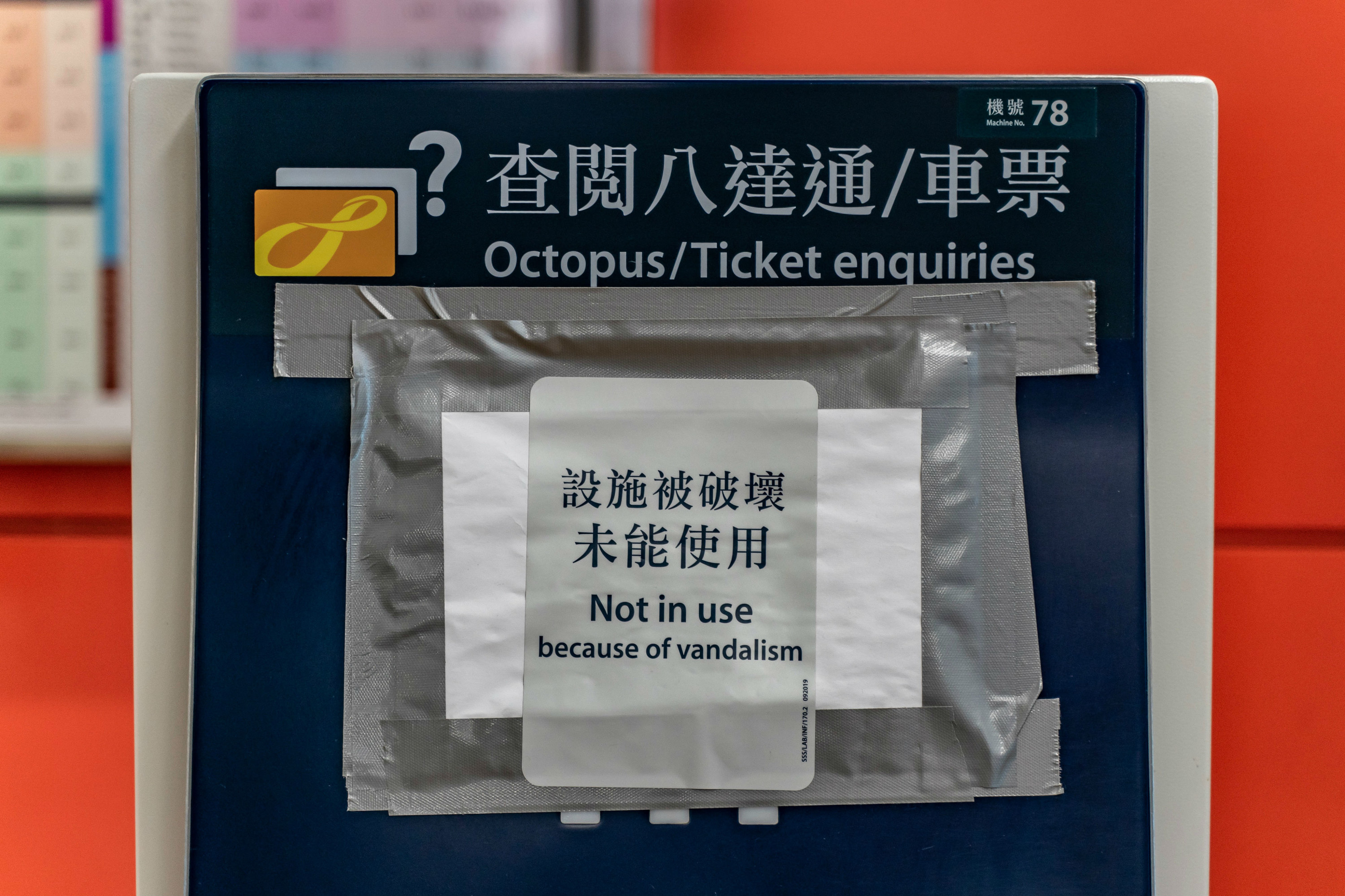
After last weekend’s days of protests, about 1,200 entry/exit gates, 800 ticket-issuing machines and add-value machines, 900 CCTV cameras, 40 elevators, and 70 roller shutters were damaged, according to the MTR.
Lam, Hong Kong's embattled chief executive, has repeatedly called for calm in her most recent statements, warning that the protests are destroying the city. But this has done little to quell the situation as protesters insist Lam is refusing to respond to their demands, as the city enters a fifth month of protests. More than 200 people were arrested in last weekend’s protests, police said earlier this week.
“Yes, they’ve tried to suppress the demonstrations and have used heavy-handed means in some cases to do it but they haven’t been very effective in suppressing it,” said Mike Chinoy, a Hong Kong–based non-resident senior fellow at the US-China Institute of USC.
While some employees said they felt conflicted about their work with the MTR as riot police continued to take over stations more frequently, others said they still felt committed to their work.
“I felt really sad when I saw the facilities and rolling stock got damaged. We have a lot of professional engineers and technicians who are very committed to our work and ensuring passenger safety,” said a worker.
“I blame the Hong Kong SAR government for taking us down with them.” ●

